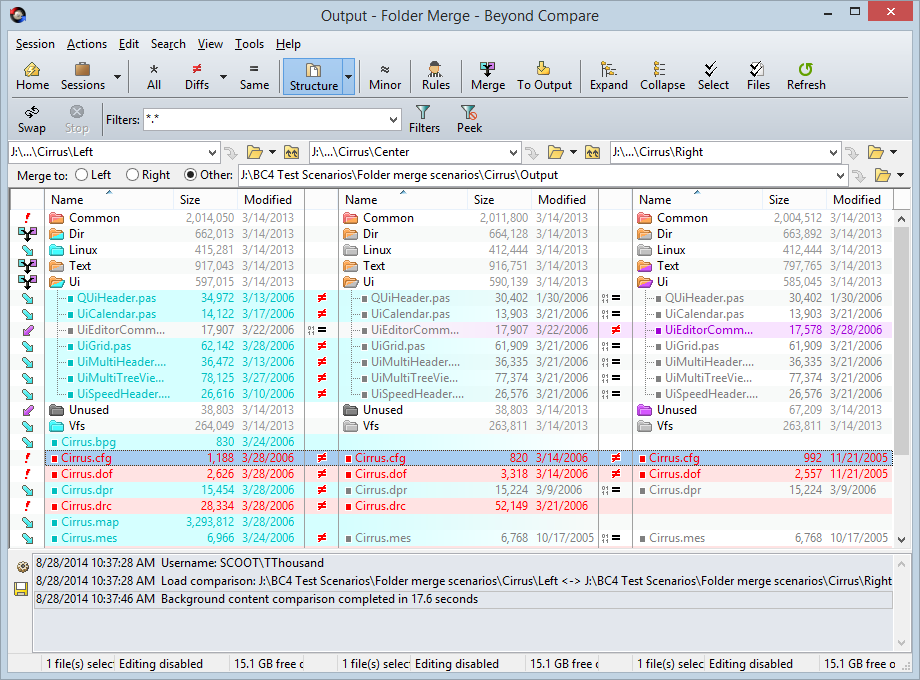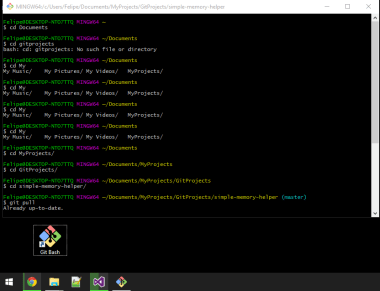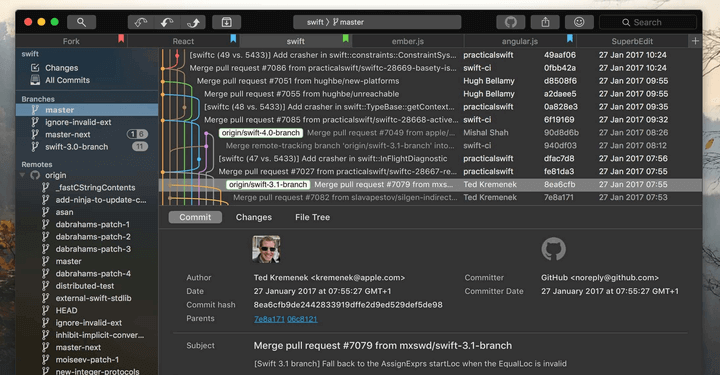- If you’re looking for a graphical Git client, you’re in luck. The only problem is deciding which one to choose. There are a bunch of GUI Git clients available for the Mac, but we’ve gathered together a few that should be on the top of your list. Before you start trying out clients randomly, give a few of these a shot.
- The new Tower adds a lot of great features that help me go on with my day faster; like the ability to create pull-requests directly from the tool. Dan Counsell CEO at Realmac Tower is the perfect Git client, I honestly wouldn’t want to use anything else.
- I have recently started using Git Kraken by Axosoft for my personal projects and I am really amazed by how great it is. It is cross platform and is available for Linux, Mac and Windows.
Git is a distributed version control system that allows teams to work on the same documents simultaneously. This means there is a single server that contains all the files, but whenever a repository is checked out from this central source, the entire repository is cloned locally to your machine.
Used command line, git-tower and sourcetree. For basic things the command line is fine but I'm finding more and more I like the visual representation of what has changed offered in sourcetree and git-tower. Sourcetree seems to have a history of working great, getting an update and then performing really slow until another update. A fast and friendly git client for Mac and Windows. Apple software office package. Fork is getting better and better day after day and we are happy to share our results with you. There are several ways to install Git on a Mac. The easiest is probably to install the Xcode Command Line Tools.
There are many remote hosts that allow you to work with Git for version control, however the most common host is GitHub. The following example uses a GitHub host, but you can use any Git host for version control in Visual Studio for Mac.

Git For Windows
If you wish to use GitHub, make sure that you have an account created and configured before following the steps in this article.
Creating a remote repo on GitHub
The following example uses a GitHub host, but you can use any Git host for version control in Visual Studio for Mac.
To set up a Git repository, execute the following steps:

Create a new Git repo at github.com:
Set Repo Name, description, and privacy. Do not initialize Repo. Set .gitignore and license to None:
The next page gives you an option to display and copy either the HTTPS or SSH address to the repo you have created:
You'll need the HTTPS address to point Visual Studio for Mac to this repo.
Git Tool For Mac Osx
Publishing an existing project
If you have an existing project that is not already in version control, use the following steps to set it up in Git:
Tip
Use a .gitignore file to control which folders and files are tracked and published with Git. You may want to exclude build directories, binaries, or generated files. Learn more in the GitHub docs on ignoring files.
Select the Solution name from the Solution Window in Visual Studio for Mac.
In the Menu bar, select Version Control > Publish in Version Control to display the Clone Repository dialog:
If this menu item appears greyed out in the menu, make sure you have selected the Solution name.
Choose the Select from Registered tab and press the Add button:
Enter the name of the repository as you would like it to display locally, and paste in the URL from step #3. Your Repository Configuration dialog should look similar to the following. Press OK:
It is also possible to use SSH to connect to Git.
To attempt to publish the app to Git, select the repository, and ensure that both Module Name and Message text fields are completed:
Click Okay, and then Publish from the alert dialog.
In the Git Credentials window, enter your GitHub username and password.

Note
If your account has two-factor authentication (2FA) enabled, you will need to create an Access Token, which is used in place of a password. If you have not created an access token, follow the steps in the Git Access Token documentation.
Enter the username and Personal Access Token, and press Okay:
After a few seconds, the Solution should be published with its initial commit. Confirm it has been published by browsing the Version Control menu item, which should now be populated with many options:
Once you start to make additional changes, first use the Version Control > Review and Commit menu to open status view. After you've selected and committed changes, select Push to push the changes to the remote repository. This will allow all appropriate users to view it on github.com:
Publishing a new project
The new project dialog can be used to create a new project with a local git repository. To enable it, select the Use git for version control checkbox, as illustrated in the following screenshot. This will initialize your repo and add an optional .gitignore file:
Follow the steps below to push your new local repository to a new GitHub repository:
Note

If you have not already created a GitHub repository, refer to the Creating a remote repo on GitHub section.
Create your first commit by going to Version Control > Review and Commit in the Menu Bar. Adobe reader for mac free version.
In the Status tab, choose Commit in the top left.
Write a commit message, for example 'First Commit', then click on Commit:
Next, in the Menu Bar go to Version Control > Manage Branches and Remotes.
Go to the Remote Sources tab, then click Add.
In the Remote Source window, add the details of your previously created GitHub repository and click OK:
Close the Git Repository Configuration window, then in the Menu Bar go to Version Control > Push Changes.
In the Push to Repository window click on the Push Changes button:
When prompted, enter your GitHub username and password.
Note
If your account has two-factor authentication (2FA) enabled, you will need to create an Access Token, which is used in place of a password. If you have not created an access token, follow the steps in the Git Access Token documentation.
Visual Studio for Mac will now push the changes to your remote GitHub repository:
Clone an existing repository
It's likely that you'll have to work with a GitHub repo that exists only on the remote, not on your local machine. Visual Studio for Mac allows you to clone this repo quickly. Follow the steps below to clone it to your machine:
Git Tool For Mac Shortcut
In the Menu bar, select Version Control > Clone Repository:
This displays the Connect with Url tab:
On the GitHub page of the remote repository, press the Clone or Download button and copy the URL provided:
Replace all the text in the URL entry field in the Connect with Url tab. This will populate most other fields in this tab for you, as illustrated in the image in step #2.
Enter the directory that you want to clone the repo into and press Clone.
Note
You may experience issues if the repo is over 4 GB in size.
Troubleshooting
If you have issues with initializing your project with an empty remote repository, you can try the following steps:
- Go to your solution folder.
- Press Command + Shift + . to show the hidden files and folders.
- If there's a .git folder, delete it.
- If there's a gitignore file, delete it.
- Press Command + Shift + . to hide the files and folders.
- Open your solution in VS for Mac.
- On the solution Window, select your solution node.
- Browse to the Version Control menu and choose Publish in Version Control.
- Follow the steps of the above tutorial starting from the step 6.
See also
To add your supply request file, do the following:
Git Gui For Mac Brew
From your BitbucketStationSupplies in Bitbucket, click Source to open the source directory. Notice you only have one file,
supplies.txt, in your directory.A. Source page: Click the link to open this page.
B. Branch selection: Pick the branch you want to view.
C. More options button: Click to open a menu with more options, such as 'Add file'.
D. Source file area: View the directory of files in Bitbucket.
From the Source page, click the More options button in the top right corner and select Add file from the menu. The More options button only appears after you have added at least one file to the repository. A page for creating the new file opens, as shown in the following image.
A. Branch with new file: Change if you want to add file to a different branch.
B. New file area: Add content for your new file here.
Enter supplyrequest in the filename field.
Select HTML from the Syntax mode list.
Add the following HTML code to the text area:
We are requesting additional supplies. Please send us the following:- space ice cream
- nerf darts
- telescope light shield
Click Commit. The Commit message field appears with the message:
supplyrequest created online with Bitbucket.Click Commit under the message field.


